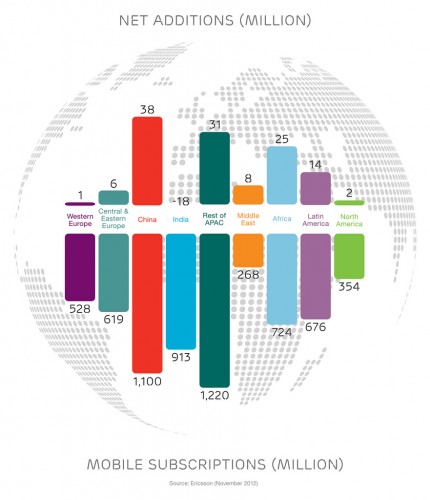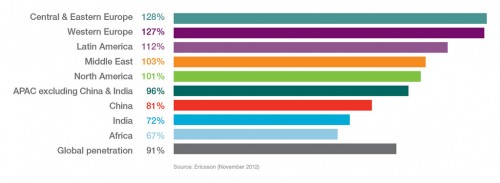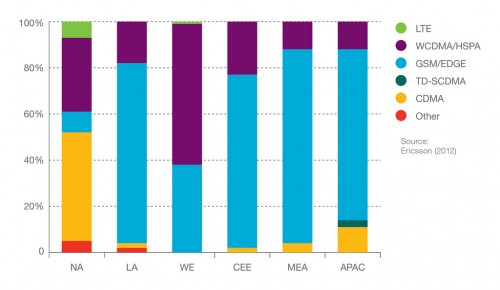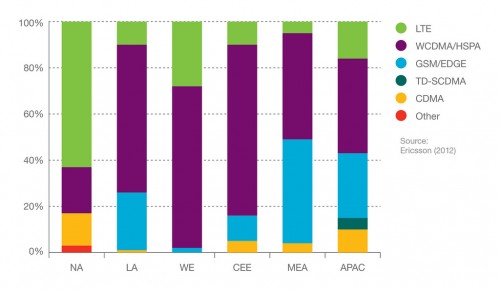Ericsson report forecasts majority of Middle East/Africa mobile subscriptions won’t be 3G or LTE until 2018
Ericsson has performed in-depth data traffic measurements since the early days of mobile broadband from a large base of live networks covering all regions of the world. As a result, the company is able to share analysis based on these measurements, internal forecasts, and other relevant studies to provide insights into the current traffic and market trends.
Globally, the Ericsson Mobility Report finds 40% of all phones sold in Q3 2012 to be smartphones. Also revealed is an annual doubling in data traffic and stats that suggest LTE is the “fastest-developing system in the history of mobile communications in terms of buildout and uptake.” By 2017, an estimated 85% of the world’s population will have the opportunity to access the Internet using mobile technology. The overall picture for mobile broadband growth is rosy, for sure, but what does it mean for Africa?
As HumanIPO points out, the African market will still rely heavily on 2G technology for years to come. Smartphone owners will still be the minority for at least six more years. A handful of charts from the Ericsson help explain the forecast:
In the Africa region, 25 million mobile subscriptions were added from July-September 2012. The total, according to Ericsson, now stands at 724 million.
The Africa mobile penetration rate (# of subscriptions divided by population size) stands at 67%, which is still the lowest of all global regions (as defined in the report). Ericsson does note the differences between subscription and subscriber, since subscriptions are often shared in developing regions.
As of September 2012, there is essentially no LTE deployed in the Middle East and Africa (MEA). Approximately 11% of mobile subscriptions are 3G, and over 85% are 2G.
Within six years (by 2018), Ericsson expects an equal number of 2G and 3G subscriptions in Middle East/Africa. Still, hardly 5% of subscriptions will be LTE in nature.
To summarize:
- In 2018, around one-third of handsets in Middle East and Africa will be smartphones
- By 2018, Middle East and Africa will will be the global region with the largest share of GSM/EDGE (2G) technology
- Large differences will exist between high developed (urban) and less developed (rural) areas (ie. LTE for urban and a mix of 2G/3G for rural)
Also, the report aptly mentions how free apps can drive up to 170x more data volume than paid-for apps (due to ad requests from the network). Mobile users with limited data plans should be cautious of such apps. And, even with networks capable of 21+ Mbps, speeds rapidly decrease as the phone’s distance from the base station increases. In addition, speeds are limited by device limitations.
Keep posted, as Ericsson will continue to share traffic and market data on a regular basis.
















 Twitter
Twitter Facebook
Facebook Pinterest
Pinterest
[…] the overall picture for global mobile broadband growth to be rosy, but what does it mean for Africa?www.oafrica.com/…/ericsson-report-forecasts-majority-of-mid…TweetPin It This entry was posted in RSS Feeds. Bookmark the permalink.← Smartphones not yet […]
[…] Projected 2018 Network Subscriptions by Type of Network source: Ericsson […]